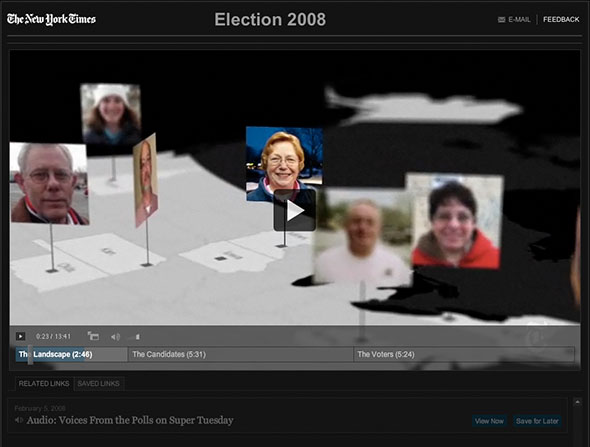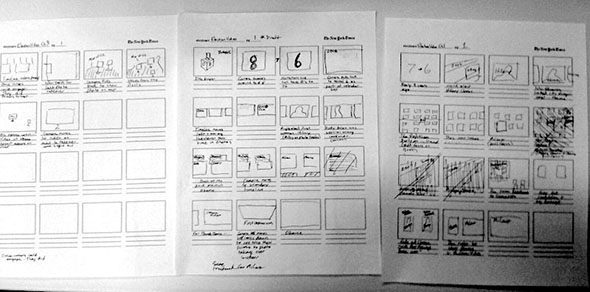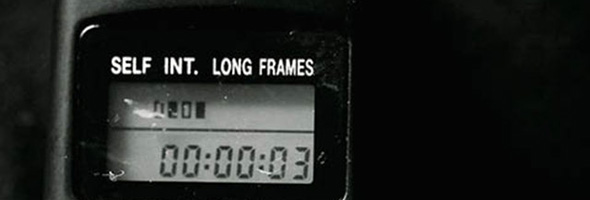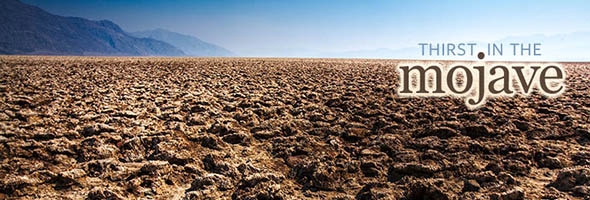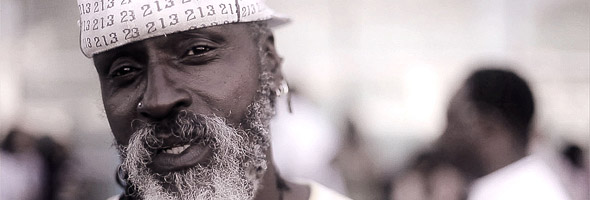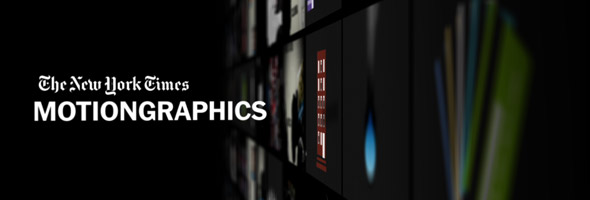Recent Posts
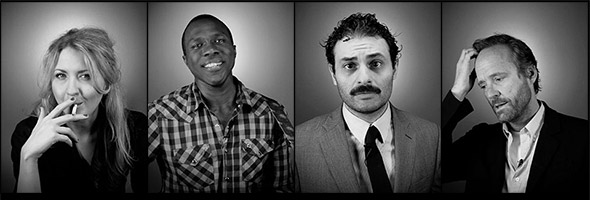
Character Building
Tony-nominated actors perform scenes from their shows out of costume but in character.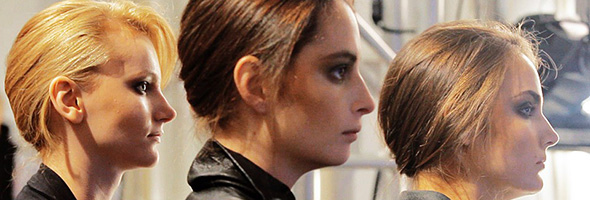
Backstage at the First Fashion Week Show
Experience the frenzy and interconnectivity of backstage at the first show at Lincoln...
A Financial House Advantage
An animated explanation of how banks use securities lending to make a profit, while...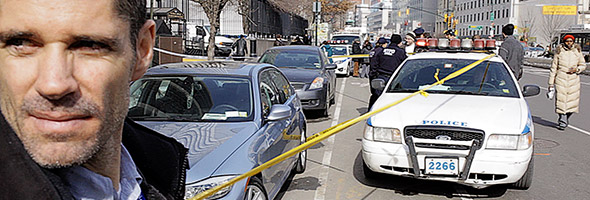
Chasing a Police Scanner
Reporter Corey Kilgannon, Marcus Yam and myself chased calls over a police scanner...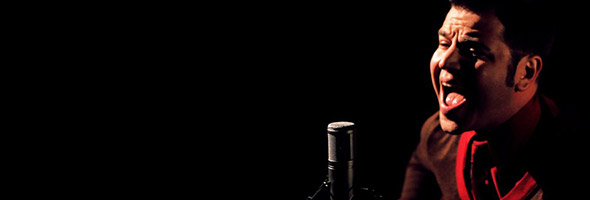
Music Videos for The New York Times Magazine
Eli "Paperboy" Reed performs the title track from his new album and a proof of concept...
Popular Posts
Choosing a President
Posted by: Zach Wise
Tags:
The New York Times
Posted date:
November 5, 2008 |
4 Comments
Choosing a President on nytimes.com
Remember when it looked like the election hinged on the candidate’s stance on Iraq? This presidential campaign has been two years in the making and the political landscape has changed a lot over those two years. Our video/photo/interactive historical look back has been a little over a week in the making but that week included some 24hr workdays. The day before the election we published Choosing a President.
Do What?
We had a hard time pitching this at the Times. It was hard to explain what we were trying to do to the top editors. We didn’t want to do a video, or an interactive or a photo gallery. We didn’t want to tell an audio story or a print story or a story through infographics and illustration. We wanted to do it all. In one story. To make it all work as one. To make it long by web standards. Most of all, we wanted it to be good. I mean, why would you do less telling the story of the most significant presidential campaign in history?
I Think it Worked
- Blog Reactions on Technorati
- Site of the Day: Choosing a President | PopWatch Blog | EW.com
- Everyone’s bookmarks for “2008 Election – Choosing a President – The New York Times” on Delicious
- Innovative Interactivity | New York Times proves it’s innovation with election wrap-up
- Twitturly – URL Info: 2008 Election – Choosing a President – The New York Times ( http://www.nytimes.com/packages/html/politics/2008-election-overview/ )
- KobreGuide to the Web’s Best Multimedia & Video Journalism – Choosing a President
- etc
Motion graphics
We thought that setting up the political landscape in 2006 would be a great way to start this story. The problem is, it’s complex. To paint the scene in 2006 you have to introduce a lot of characters, relationships between contenders and political parties, motivations etc. Just cutting from photo to photo or video clip to video clip over top of narration didn’t seem like the best way to do this in a timely fashion. We opted to produce the opening sequences in After Effects, so that we could introduce the field of candidates and visually show relationships and motivations backed by narration.
Getting back into After Effects was fun. It can be a daunting program if you don’t use it everyday, and getting your head into it can sometimes take awhile but in the end, it can do things you can’t do with a camera. Like pivot on a dime hovering over the U.S. and swinging from state to state to hear the voices of voters. Hopefully we will use this story telling device more in the future. We’re a long way from the production quality of the TV and movie industries that use these post production programs everyday but I like to think we look a little classier.
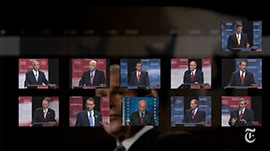
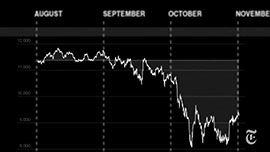
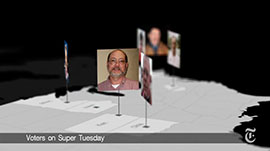
Chapter One Storyboards:
Storyboards for the first chapter which was later produced in After Effects.
Update:
Some people wanted to know how the work was divided among the producers and what sort of timetable we were working under. So here it is.
- Andrew DeVigal, multimedia editor, had the idea for the piece and the general approach came from him. He also took control of the mouse during the edit several times.
- Nancy Donaldson, who started at the Times shortly after me, worked closely with David Scull, the photo editor to make selects and sequence a large part of the Final Cut project. Donaldson came from the Washington Post where she produced some truly inspiring stories.
- Amy O’Leary, formerly of This American Life, wrote script drafts and worked closely with Katharine Q. Seelye on the final script and narration. Amy also composed the music for the piece and did the master mix on most of the audio for the project.
- Ben Werschkul did initial video edits and worked with Amy O’Leary and Katharine Q. Seelye on the script
- Tom Jackson created the interactive video player.
- I produced chapter 1 using mostly After Effects and helped on editing the other chapters. The decision to use motion graphics in the first chapter was one we all agreed on being the best format for this part of the story. I started story-boarding based on the script draft. Once the script was finalized I reworked the storyboards to reflect the changes and started working in After Effects.
For the most part Nancy did a majority of the editing work in Final Cut but at times Amy, Andrew, and I would also work on some of the edits. We worked very collaboratively and we divided up the workflow effectively. It helped that we were all on the same page, as far as storytelling goes, so we all work together towards the same goal.
We had a little over a week to get this project done, but most of the actual production didn’t start until the Wednesday before the election. We were done by Sunday and very sleep deprived.
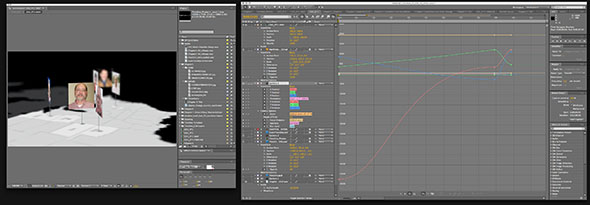
Screen-shot of the final After Effects project
About the author

Zach Wise is an award-winning former Senior Multimedia Producer for The New York Times and Associate Professor at Northwestern University.
Related Posts
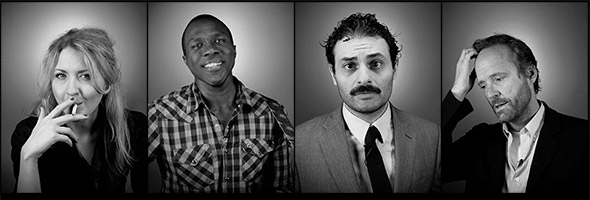
Character Building
Tony-nominated actors perform scenes from their shows out of costume but in character.

Backstage at the First Fashion Week Show
Experience the frenzy and interconnectivity of backstage at the first show at Lincoln Center during New York Fashion Week.

A Financial House Advantage
An animated explanation of how banks use securities lending to make a profit, while their customers cover the losses.
-
http://twitter.com/zlwise/statuses/999082887 zlwise (Zach Wise)
-
http://www.innovativeinteractivity.com Tracy Boyer
-
http://chrisphoto.com chris
-
http://digitalartwork.net/2008/12/21/demo-reel-2008/ Demo Reel 2008 :: digitalartwork – Multimedia Journalism
Copyright ©2010 digitalartwork.net

